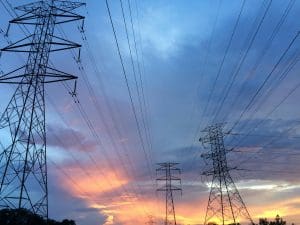Navigating the Currents: New Zealand Energy Insights from the First Half of 2025

Renewable Generation: Resilience Amidst Weather Extremes
One of the dominant stories in the New Zealand energy conversation this year has been the nation’s reliance on renewable generation—and the vulnerabilities that come with it. After a mild and dry summer, several regions experienced lower-than-expected inflows into hydro catchments, putting pressure on generation capacity during March and April.
Hydro generation, which still makes up around 55% of New Zealand’s electricity mix, struggled to meet demand at peak times, leading to a brief but notable reliance on gas-fired backup generation. While this did not lead to blackouts, it reignited discussions about energy security, dry-year storage, and the need for better grid balancing.
On a more positive note, wind and solar performed strongly. New installations in the Manawatū-Whanganui region and Northland added to national generation capacity, with utility-scale solar making a measurable contribution during daylight hours. The New Zealand energy industry also saw increased investment interest in battery storage projects, many of which are now entering feasibility or early development stages.

New Zealand Energy – Auckland City Lights
Government Policy: A Balancing Act
Government policy decisions in early 2025 sent mixed signals to the sector. On the one hand, the Climate Change Commission’s interim advice—released in February—emphasised accelerating electrification and reducing emissions from industrial processes. This led to a surge in funding applications for electrification projects and public transport initiatives, supported through the expanded Government Investment in Decarbonising Industry (GIDI) fund.
However, the government’s cautious stance on consenting reform has created delays for several major infrastructure projects. Fast-track legislation aimed at speeding up renewable energy development has yet to pass, causing frustration among developers. Industry leaders are urging more decisive action to cut through red tape, especially as New Zealand works toward its 2030 climate targets.
Despite these hurdles, public sentiment remains strongly in favour of a clean energy transition, and the government has reaffirmed its commitment to reaching 100% renewable electricity by 2035.
Technology Trends: Smarter, More Connected
Technological innovation continues to redefine how we produce, manage, and consume New Zealand energy. The rollout of smart meters has accelerated in the first half of 2025, with over 90% of households now connected to real-time monitoring systems. This shift is empowering consumers to better understand their usage and adopt energy-efficient behaviours.
Commercial and industrial users are also embracing smart energy technologies. At Shape Energy, we’ve seen significant uptake in digital energy management systems that combine real-time analytics, predictive modelling, and AI optimisation. These systems are helping clients reduce costs and emissions while improving operational resilience.
Electric vehicle (EV) integration is another hot topic. With EV registrations continuing to climb, pressure is growing on distribution networks, particularly in urban centres. In response, several lines companies have started pilot projects involving vehicle-to-grid (V2G) technology, which allows EVs to supply power back to the grid during peak demand. While still in its infancy, this innovation could become a game-changer in how energy is shared and stored.
Looking Ahead: Trends to Watch
As we move into the second half of 2025, several trends are worth keeping an eye on:
-
Decentralisation of energy systems – More communities and businesses are adopting local generation and storage solutions, increasing resilience and reducing reliance on national infrastructure.
-
Electrification of transport and industry – The transition is picking up speed, but bottlenecks in supply chains and grid capacity remain challenges to overcome.
-
Pricing volatility – With fluctuating demand, transmission constraints, and global commodity shifts, electricity pricing has seen more variation in 2025 than in previous years. Businesses are increasingly looking for long-term strategies to manage risk.

The first half of 2025
The first half of 2025 has proven that the path to a sustainable and resilient New Zealand energy future is not linear. While there have been disruptions and uncertainties, there is also clear momentum in innovation, investment, and public will.
At Shape Energy, we’re committed to helping New Zealanders make sense of the evolving energy landscape. Whether it’s reducing emissions, managing energy costs, or building future-ready infrastructure, the opportunities are there for those ready to lead.
Stay connected with us as we continue to share insights, support our partners, and shape the future of energy in Aotearoa.
Interested in what these changes mean for your business or community?
Get in touch with the Shape Energy team today to explore tailored energy solutions built for the future.

